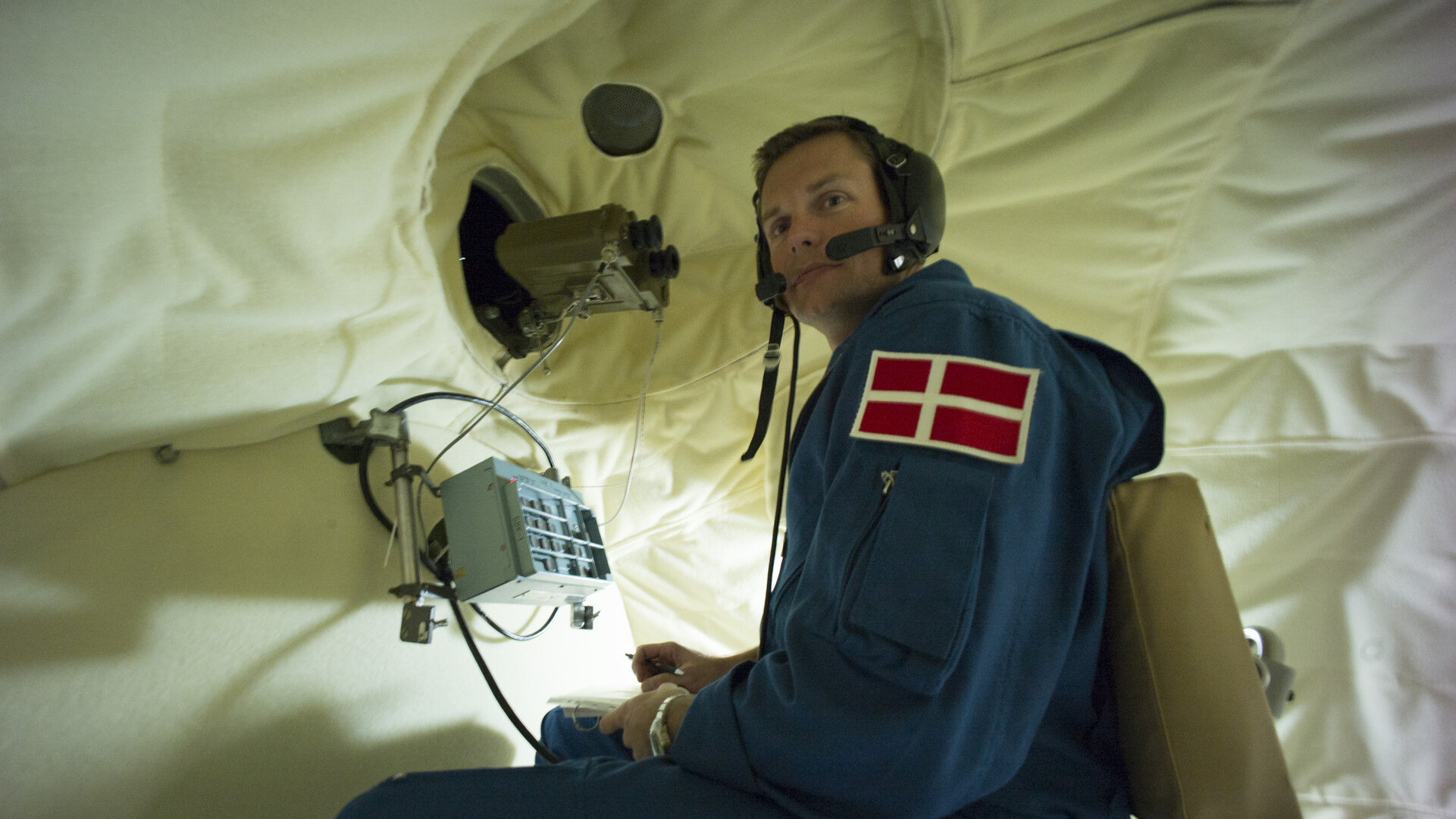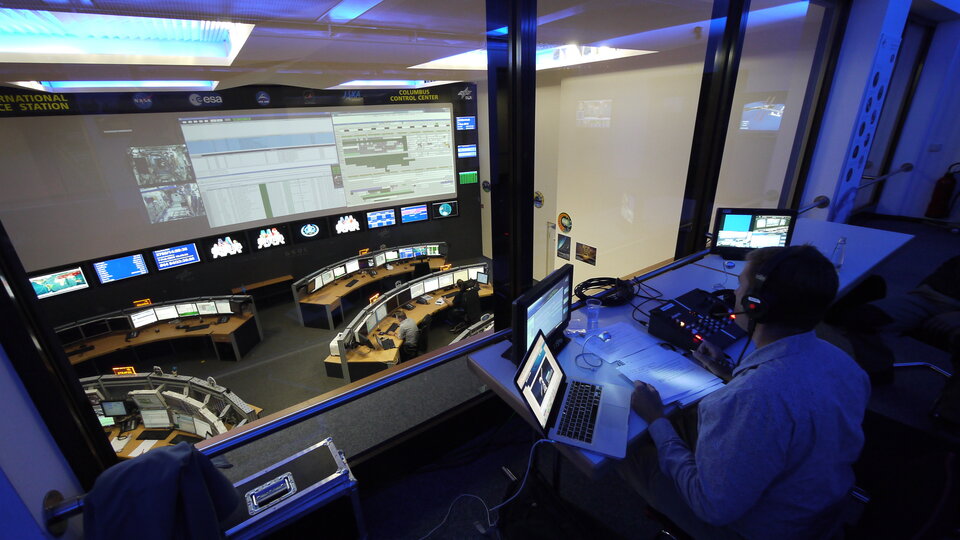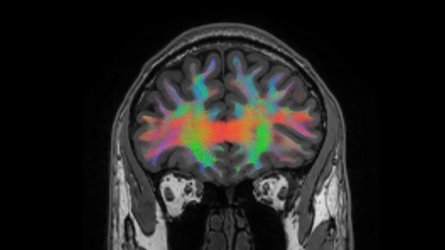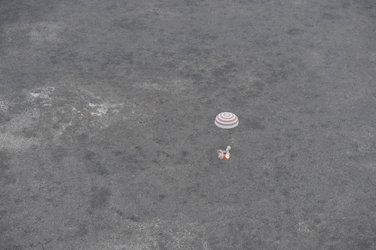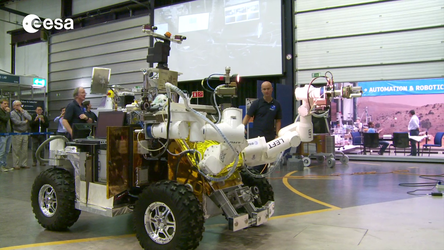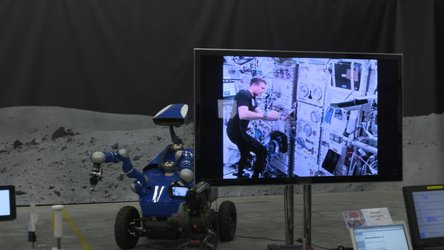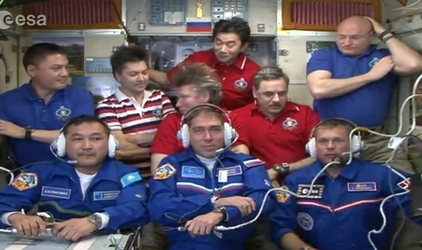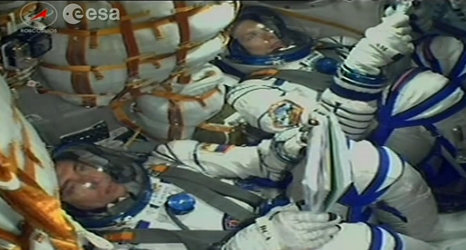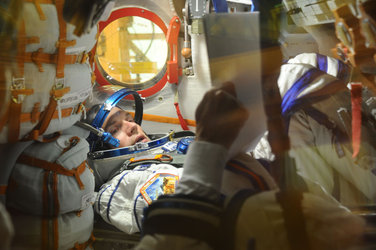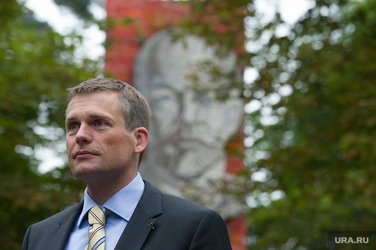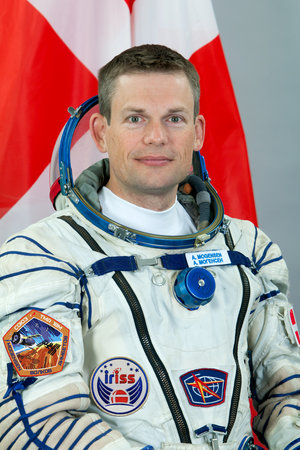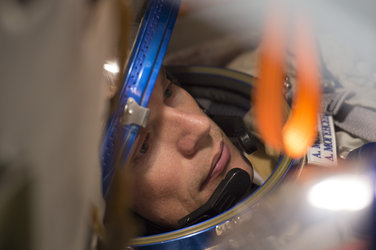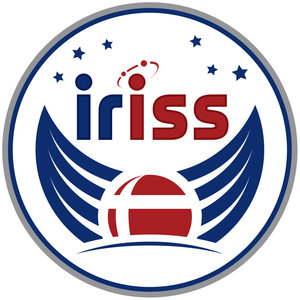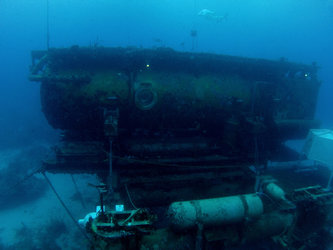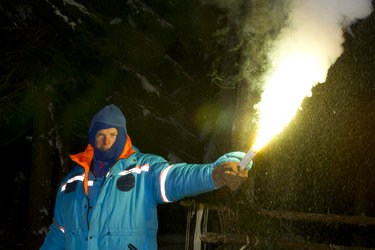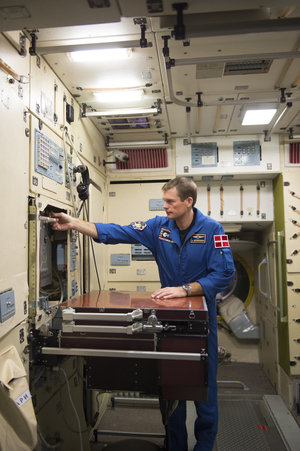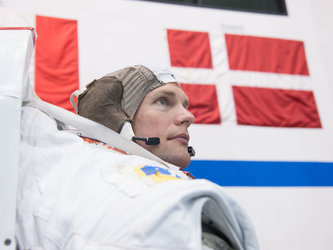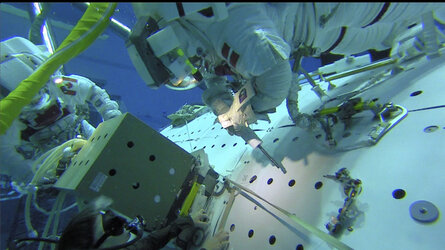A ‘sprint’ mission
ESA astronaut Andreas Mogensen’s ‘iriss’ mission to the International Space Station only lasted ten days making the experience more intense for everyone involved.
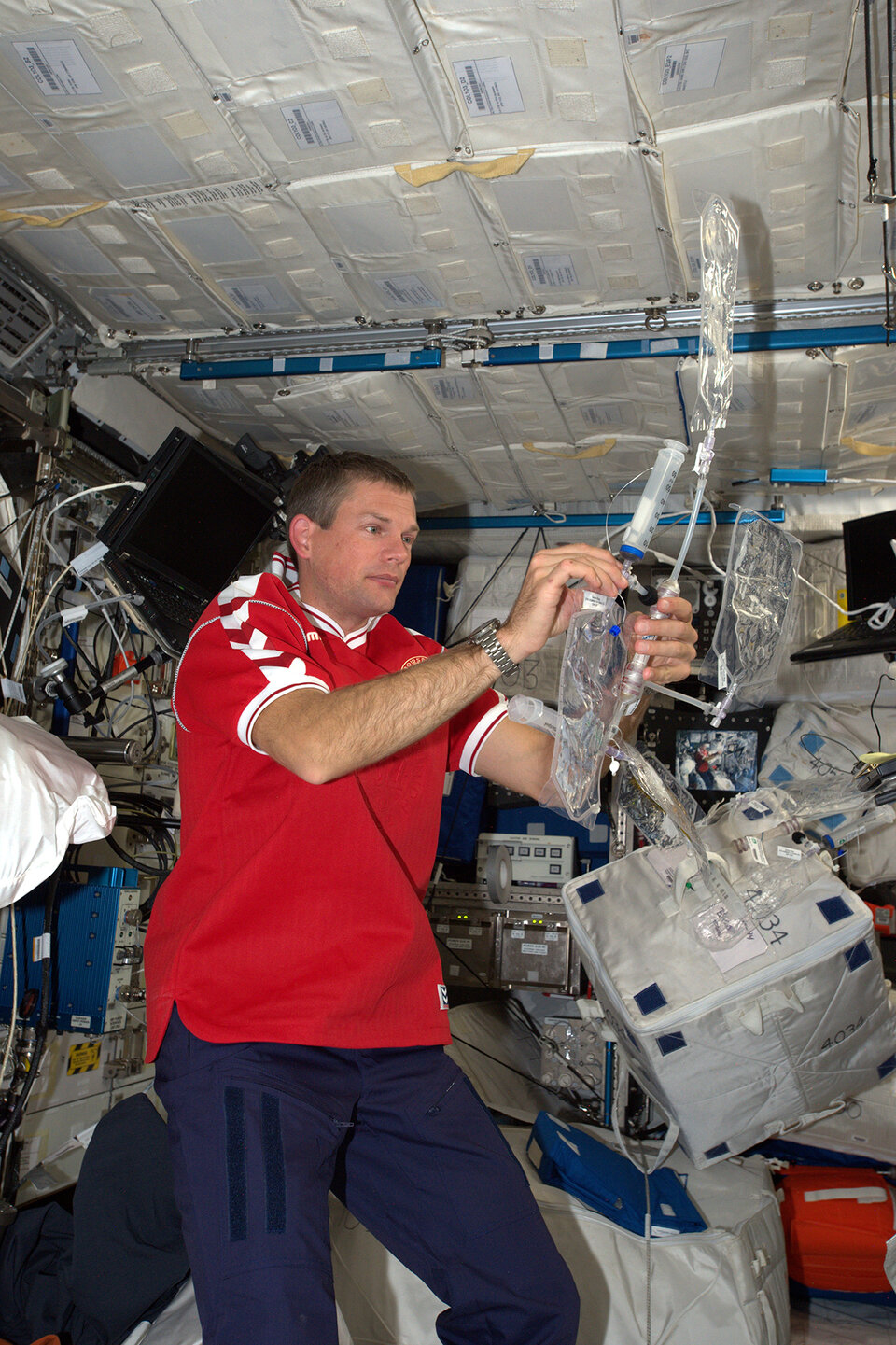
Most astronauts spend around six months on the Space Station and have a few week to acclimatise to living in weightlessness, Andreas had no such luxury. Straight out of the Soyuz spacecraft that took him to space, Andreas got to work on ESA experiments.
Andreas worked up to nine and a half-hour days instead of the eight-hour workdays that are usual for astronauts on the Station.
Shorter missions are ideal for testing new technology for space and new ways of operation. Andreas tried a novel suit to alleviate backpain, operated a car-sized rover and used augmented reality goggles to guide him through maintenance tasks.
His main workplace was Europe’s space laboratory Columbus where Andreas performed his studies for the engineers and scientists on Earth.
Andreas shared the Station with eight other people including spaceflight veterans Scott Kelly and Mikhail Korniyenko, who are staying in space for almost a year on their marathon mission.

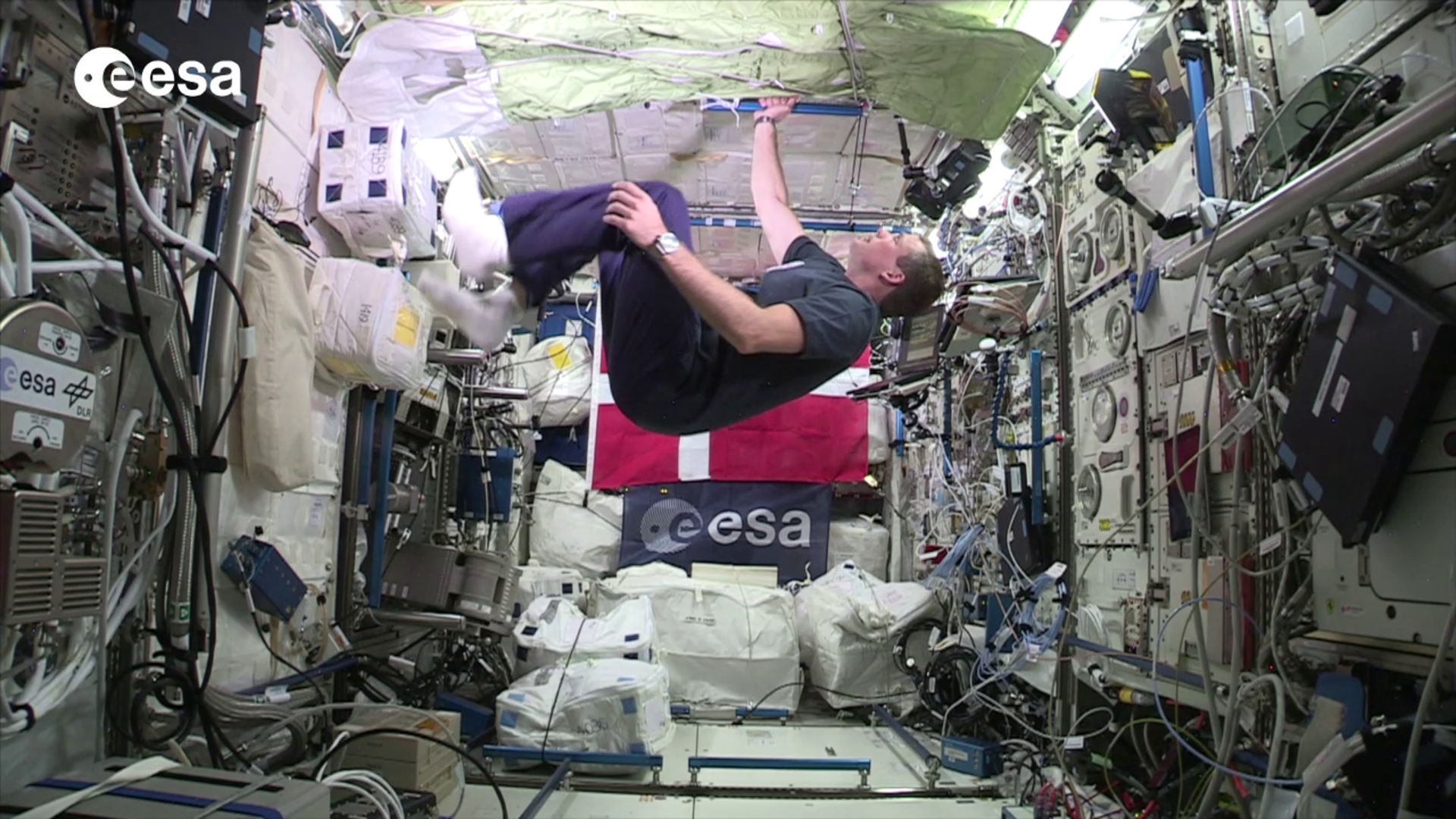
Access the video
Andreas’s sprint to the Space Station saw him leave behind his Soyuz spacecraft that took him to space, returning in Scott and Mikhail’s spacecraft – each spacecraft has a maximum time allowed in space.
Ground support
The difference is like the difference between a marathon and a sprint. Roland Luettgens, ESA Mission Director
On Earth, ESA’s Columbus Control Centre at Oberpfaffenhofen near Munich, Germany, followed and helped Andreas non-stop during his sprint.
As Andreas’s short-duration mission was planned and executed by ESA, the flight directors had more work, and only hours instead of weeks to adapt to new situations. The Control Centre provided additional support for the iriss mission, with many people working while Andreas slept in space to prepare the schedule for his day ahead.
A new high-speed data link allowed for direct download of live video for experiments allowing mission control to literally see what the astronaut sees as he works, and offer advice if needed.
Follow Andreas Mogensen via andreasmogensen.esa.int














 Germany
Germany
 Austria
Austria
 Belgium
Belgium
 Denmark
Denmark
 Spain
Spain
 Estonia
Estonia
 Finland
Finland
 France
France
 Greece
Greece
 Hungary
Hungary
 Ireland
Ireland
 Italy
Italy
 Luxembourg
Luxembourg
 Norway
Norway
 The Netherlands
The Netherlands
 Poland
Poland
 Portugal
Portugal
 Czechia
Czechia
 Romania
Romania
 United Kingdom
United Kingdom
 Slovenia
Slovenia
 Sweden
Sweden
 Switzerland
Switzerland

























